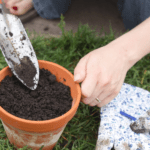Would you like to add a touch of tropical beauty to your home with bromeliad plants?
These stunning plants, known for their vibrant colors and unique foliage, are surprisingly easy to care for.
We’re unveiling all the information you need to keep your bromeliads thriving.
From choosing the right location to understanding their watering needs, we’ll cover it all.
We’ll also discuss the importance of proper fertilization, maintaining the ideal temperature and humidity levels, and how to check for common issues and pests.
With a little TLC, your bromeliads will reward you with their stunning beauty and bring a touch of the tropics into your home.
So, dive in and learn how to care for bromeliad plants indoors.
Choose the Right Location for Your Bromeliad

When choosing a location for your bromeliad plant in your home, it is crucial to consider its natural habitat.
Bromeliads typically grow in tropical rainforests, therefore, prefer bright, indirect light.
Avoid placing your bromeliad in direct sunlight as it can scorch the leaves.
Ensure that the temperature remains between 60-80°F (15-27°C), as extreme heat or cold can be detrimental to its health.
Humidity is another important factor to consider. Bromeliads thrive in humid environments, so misting their leaves with water or placing a humidifier nearby can create the perfect atmosphere.
Make sure the location has good air circulation to prevent stagnant air around the plant.
Light Requirements
Light plays a crucial role in the growth and development of bromeliads.
To care for bromeliad plants indoors consider the following light requirements:
- Bright, indirect light: Most bromeliads prefer bright, indirect light. Place them near a window where they can receive filtered sunlight throughout the day.
- Light levels: Different bromeliad varieties have different light requirements. Soft, flexible, spineless leaves indicate a preference for lower light levels, while stiff, hard leaves thrive in bright indirect light.
- Monitor plant health: Pay attention to the color and shape of your bromeliad leaves. Yellowish leaves may indicate too much light exposure, while dark green or elongated leaves may suggest insufficient light.
- Increase light exposure: If your bromeliad is not blooming, increasing its light exposure can help, provided all other conditions are suitable. Gradually move it to a brighter location, but avoid direct sunlight, as it can cause damage.
Understand the Watering Needs of Your Bromeliad
You must water your bromeliad sparingly and provide proper drainage.
Bromeliads prefer moist, not soggy, soil, so it’s important to wait until the top two inches of soil feel dry to the touch before watering.
Overwatering can lead to root rot, so it’s crucial to avoid letting the plant rest in standing water.
During the growing season, water the plant weekly through the soil, but reduce watering during the winter rest period.
Remember to provide adequate drainage to prevent waterlogging and remove any built-up salts by flushing the central cup occasionally.
Provide Proper Fertilization for Healthy Growth

Bromeliads have unique nutritional needs and fertilizing them correctly is essential for their growth.
When it comes to fertilizing bromeliads, it is important to use a balanced, acidic water-soluble fertilizer that is specifically formulated for bromeliads or other tropical plants.
Bromeliads are epiphytic, meaning they derive nutrients from the air and water rather than the soil.
Therefore, it is crucial to avoid using fertilizers that are high in nitrogen, as this can harm the plant.
Instead, opt for a fertilizer with a balanced ratio of nitrogen, phosphorus, and potassium.
It is best to dilute the fertilizer to 1/4 to 1/8 the recommended strength and apply it to the plant’s central cup or the soil around its base.
Fertilize your bromeliad every two to four weeks during the growing season and reduce or stop fertilizing during the dormant period.
Maintain the Ideal Temperature and Humidity Levels
Maintaining the ideal temperature and humidity levels is crucial for creating the perfect environment for your bromeliad to flourish.
Bromeliads are tropical plants, so they thrive in warm temperatures ranging from 60 to 80 degrees Fahrenheit.
It’s important to keep the temperature consistent, avoiding drastic fluctuations that can stress the plant.
They prefer humidity levels between 40% and 60%. To maintain the required humidity, you can mist the leaves with water or place a tray with water near the plant.
However, be cautious not to overwater, as bromeliads are susceptible to root rot.
If you live in a dry climate, you can use a humidifier or group your bromeliads together to create a microclimate with increased humidity.
Check for Common Issues and Pests
Dealing with common issues and pests can be a challenging aspect of growing bromeliads, but understanding how to troubleshoot and overcome these problems will help ensure your plants thrive.
One common issue that bromeliads may face is overwatering, which can lead to root rot.
To prevent this, make sure the soil is well-draining and allow the top inch of soil to dry out before watering again.
Another issue is under-watering, which can cause the leaves to become dry and brown. To remedy this, water the plant thoroughly and mist the leaves regularly to increase humidity.
Pests such as aphids and mealybugs can also infest bromeliads. To control these pests, you can use insecticidal soap or wipe the leaves with a mixture of water and dish soap.
Regularly inspecting your plants and addressing any issues promptly will help keep your bromeliads healthy and beautiful.
Conclusion
Caring for bromeliads involves providing the right location, watering, fertilization, and maintaining the ideal temperature and humidity levels.
By following these guidelines, you can ensure healthy growth and prevent common issues and pests.
Remember to regularly check on your bromeliad and make any necessary adjustments to its care routine.
Now that you know how to care for bromeliad plants indoors, your bromeliads will thrive and bring beauty to your home.
FAQs
How often should I repot my bromeliad?
Repotting frequency depends on the growth rate of the bromeliad. Generally, it is recommended to repot every 1-3 years. Signs of overcrowding or root-bound plants indicate the need for repotting.
Can I grow a bromeliad outdoors?
Yes, bromeliads can be grown outdoors as long as the climate is warm and humid. They thrive in bright, indirect sunlight and well-draining soil. Regular watering, fertilizing, and protection from extreme temperatures are important for their health.
Are bromeliads toxic to pets?
Bromeliads are not toxic to pets. They are safe to have around cats and dogs. However, it’s always a good idea to monitor your pets and keep them from chewing on the plants.
What are the different types of bromeliads?
There are various types of bromeliads, including popular ones like the Aechmea, Guzmania, and Tillandsia. These plants come in different shapes, sizes, and colors, adding beauty to any indoor or outdoor space.







